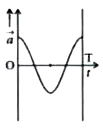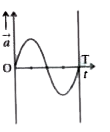A
B
C
D
Text Solution
Verified by Experts
The correct Answer is:
|
Topper's Solved these Questions
SIMPLE HARMONIC MOTION
ALLEN |Exercise Exercise-02|19 VideosView PlaylistSIMPLE HARMONIC MOTION
ALLEN |Exercise Exercise- 3 Match The Column|1 VideosView PlaylistSIMPLE HARMONIC MOTION
ALLEN |Exercise SOME WORKED OUT EXAMPLES|29 VideosView PlaylistRACE
ALLEN |Exercise Basic Maths (Wave Motion & Dopplers Effect) (Stationary waves & doppler effect, beats)|25 VideosView PlaylistTEST PAPER
ALLEN |Exercise PHYSICS|4 VideosView Playlist
Similar Questions
Explore conceptually related problems
Knowledge Check
Similar Questions
Explore conceptually related problems
ALLEN -SIMPLE HARMONIC MOTION-Exercise-01
- The equation of motion of a particle of mass 1g is (d^(2)x)/(dt^(2)) +...
02:07
|
Playing Now - Two bodies performing S.H.M. have same amplitude and frequency. Their ...
05:25
|
Play - The figure shows the displacement-time graph of a particle executing S...
03:48
|
Play - Two particles execute SHM of same amplitude and frequency on parallel ...
02:23
|
Play - A small mass executes linear SHM about O with amplitude a and period T...
01:33
|
Play - Two particles A to B perform SHM along the same stright line with the ...
01:21
|
Play - A particle exectes S.H.M. along a straight line with mean position x =...
04:44
|
Play - A particle performing SHM is found at its equilibrium position at t = ...
05:07
|
Play - The diagram shows two oscillations. What is the phase difference betwe...
02:41
|
Play - An object of mass m is attached to a spring. The restroing force of th...
01:30
|
Play - A particle performs SHM in a straight line. In the first second, start...
02:44
|
Play - A particle is subjected to two mutually perpendicular simple harmonic ...
05:41
|
Play - The period of a particle in SHM is 8s. At t=0 it is at the mean positi...
03:19
|
Play - A particle executes SHM with time period T and amplitude A. The maximu...
04:12
|
Play - The time taken by a particle performing SHM to pass from point A and B...
02:18
|
Play - The P.E. of an oscillation particle at rest position is 10J and its av...
01:21
|
Play - Block A in the figure is released from the rest when the extension in ...
02:51
|
Play - A system is shown in the figure. The time period for small oscillatio...
02:20
|
Play - A block of mass 0.9 kg attached to a spring of force constant k is lyi...
02:04
|
Play - The length of a spring is alpha when a force of 4N is applied on it an...
04:35
|
Play



